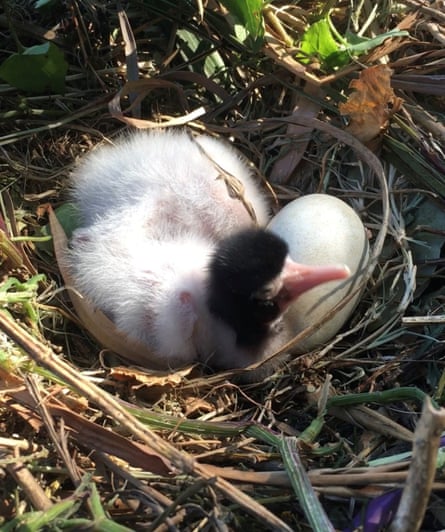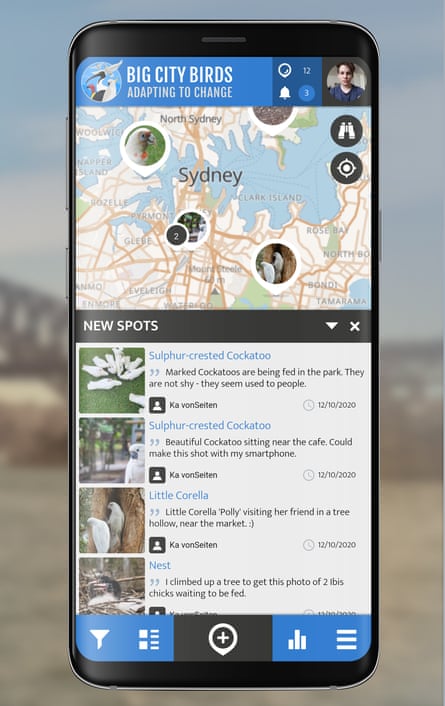Extract from The Guardian
Big City Birds app launched to help researchers better understand sulphur-crested cockatoo, ibis and brush-turkey.

Last modified on Thu 12 Nov 2020 05.33 AEDT
There’s a new reason to engage with some of Australia’s most ubiquitous birds. A new app allows users to record the whereabouts of “big city” species like the sulphur-crested cockatoo and the Australian white ibis.
Researchers at the University of Sydney and Taronga Conservation Society have launched the Big City Birds app to assist scientists with data collection and help them better understand some of our most common species.
“Using the Big City Birds app or website, every person in Australia can be a citizen scientist and report when they see any of the five bird species,” said Big City Birds co-creator Matthew Hall, a PhD candidate at the University of Sydney’s school of life and environmental sciences.

The app will also allow users to note any tagging or marking on the bird, update nest movements, and even note foods the birds are eating or scavenging.
“We aim to use this information to help understand the behaviours that have allowed some bird species to adapt to the challenges and opportunities of living with humans,” he said.
Sean Dooley, the national public affairs manager for BirdLife Australia, told Guardian Australia there was a gap in the understanding of these urban birds because much of the attention usually turned to birds in peril.
“We have a big gap in our knowledge. Perversely, we sometimes know less about how our most common birds are doing than we do about how our most threatened birds are doing.”
“Its a shame,
because birds are such a brilliant indicator of our local environment.
The state of our bird population is an expression of what we’re doing to
our landscape.”
The new app builds on the team’s previous, Eureka award-nominated brush-turkey tracking app, which reportedly received more than 50,000 sightings from more than 5,000 participants.
“This community support has helped us learn about cockatoo social networks, birds’ novel adaptations to habitat and foraging resources, and brush-turkeys’ expansion from the bush into the city,” said joint project leader Dr John Martin, a research scientist at Taronga Conservation Society and an honorary associate at the university.
“It is breeding season at the moment and we’re starting to receive reports of brush-turkey chicks. [Users] can help us learn about when and where chicks are hatching, and continue to report sightings as they grow using the Big City Birds app.”
Last year, the white ibis made it into the top 10 most commonly seen birds across the country, according to BirdLife Australia’s Aussie Backyard Bird Count. It was the first time a new species had joined the top 10 since 2014.
In 2017, the white ibis almost cracked the number one spot on the annual bird of the year list, coming in second place.
Experts believe the drought in regional areas has resulted in more birds moving towards wetter areas near the coast. To Dooley, the ibis represents a pillar of resilience and adaptability.
“I think we should hold the ibis up in admiration. They’ve been dealt a dreadful hand in how we’ve managed the water systems in this country, their core habitat,” Dooley said. “I think their resilience and adaptability is to be admired.”
Martin said the new app would give scientists a better understanding of why and how the birds moved and chose to nest.
“Learning how these birds are adapting to and exploiting cities informs how we can enhance wildlife diversity in our cities. It also provides people with an opportunity to connect with nature in their day-to-day lives,” he said.
Dooley also hopes such an app would provide people an opportunity to reflect on how they interact and live with the natural environment around them.
“We’re not separate to nature, even in our dense, urban areas, there’s still a natural environment that we’re a part of, and how we act in it has impacts and has ramifications.”
Visit the University of Sydney’s Spotteron Citizen Science for more information and to download the Big City Birds app
No comments:
Post a Comment